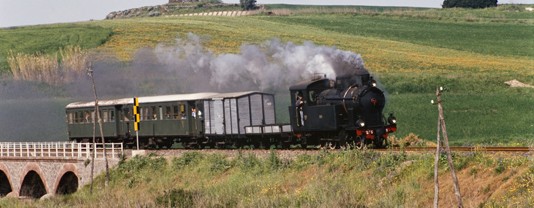On 3 October of last year the Italian railways celebrated their 175th anniversary. Not the Gruppo FSI, which was originally founded under the name “Amministrazione autonoma delle Ferrovie dello Stato” (Autonomous administration of the State Railways) on 1 July 1905, but the railway itself as a means of transport. That day in 1839, the Bourbon King Ferdinand II inaugurated the 7.6 km double track Naples – Granatello di Portici line, the Italian peninsula’s very first railway. Italy was not yet a unified state (this was to take place in 1861), but in the years that followed the train spread rapidly throughout the country. We cannot neglect to mention such an important anniversary, also because in the very first week of October the Gruppo FSI presented the newly-established Fondazione Ferrovie dello Stato Italiane (Italian FS Foundation) the aim of which is to preserve and promote the immense historical and technical heritage of these 175 years. So we met up with Mr. Luigi Cantamessa, Director of the Foundation and engineer, who took us on a fascinating tour of the mementos and documents collected. It is interesting to note that the Foundation does not conceive of this preservation in a traditional sense: there are, of course, museums, libraries and photo libraries, but drawing on the concept that the train is a means of locomotion, over 200 pieces of historical rolling stock are maintained in service, including countless steam locomotives.Rolling stock which in 2014 alone made up over 100 historical and tourist trains, becoming the best ambassadors of the train throughout the country. A historical phase is also being experienced in Croatia, which became part of the European Union on 1 July 2013. At less than two years from this date, we decided to overview the railway situation in that country, a hub for the Balkan traffic corridors. An image in chiaroscuro is what emerges, in which projects for upgrading the network – thanks also to the EU Cohesion Funds – contrast with an ordinary management heavily in the red due both to the difficult conversion into independent enterprises of the holding in which the Croatian railways were organized, and to the economic crisis which has been weighing upon the country in recent years, following a period of significant growth. Returning to Italy, in this issue we finish our tour of the narrow gauge railways in Sardinia. The entire island is crisscrossed by over 600 km of lines running from the coast to the wildest, most natural inland areas (where, on the whole, only tourist trains operate today) while trains offering public services are concentrated around the main towns. Managed by the Sardinia Region through the ARST (Sardinian Regional Transport Company), the network suffers the budgetary problems common to all the local railway undertakings, but notwithstanding this, it the object of major projects, not only concerning maintenance but also revamping, using the most innovative management systems. So alongside the historical locomotives of the “Trenino Verde” (little green train), we shall soon be witnessing the launching of the tramtrain in Cagliari, which will use the existing railway line in the sections between Cagliari Monserrato and Settimo San Pietro. The track will be used both by the trams in service in Cagliari and by the trains, but never with mixed traffic. An example of how to improve existing infrastructures with modern and relatively economical solutions. In addition to the usual news from the world, this issue is completed by three technical articles. The first describes a system for analyzing the temperature of the undercarriage and its technical apparatus in the trains of the Genoa metro. The second is dedicated to an interesting case-history: it illustrates the evaluation model adopted on the Trans Mongolian Railway to determine the effect of the signalling system on the traffic capacity of a single track line. Last but not least, the third article analyses the maintenance of railway switches with a special focus on the technical evolution of construction metals. Enjoy your read.
Franco Tanel
